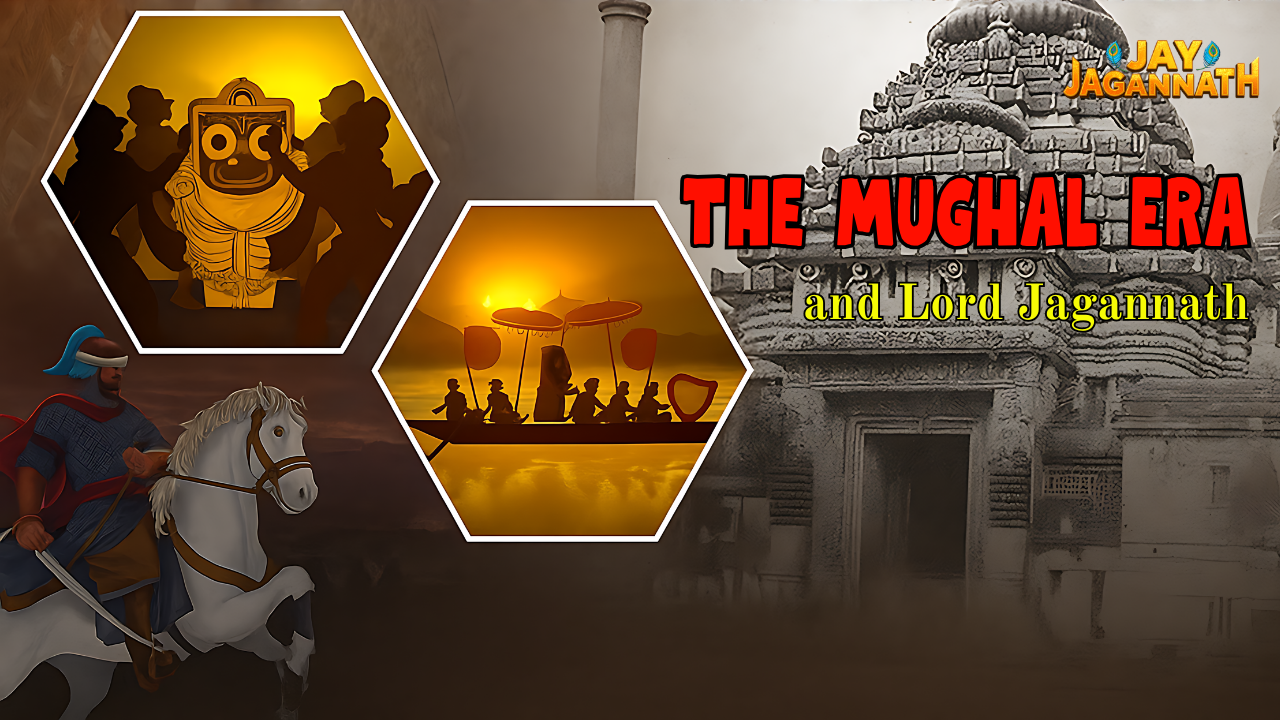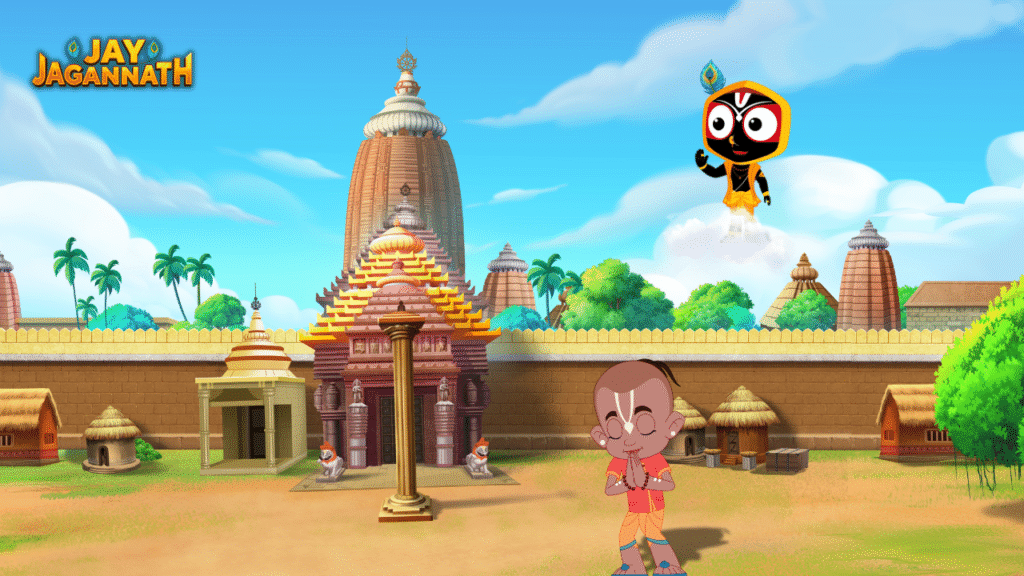
The Mughal Era and Lord Jagannath: Trials, Tolerance, and Temple Resilience
The Mughal Era and Lord Jagannath. The Jagannath Temple in Puri, Odisha, is not just a sacred shrine—it is a living symbol of faith, culture, and resilience. Built in the 12th century by King Anantavarman Chodaganga Deva, this temple has seen many rulers, empires, and changing times. Among these, the Mughal era stands out as a period of trials and endurance, where the temple faced challenges but continued to shine as a center of devotion.
Before the Mughals: The Glory of Jagannath Temple
Long before the Mughals entered Odisha, the Jagannath Temple was already famous across India. Thousands of pilgrims visited Puri every year, especially during the grand Rath Yatra festival. The temple rituals, daily offerings, and spiritual atmosphere made it the cultural heart of Odisha. By the time the Mughals expanded their rule in the 16th century, the temple was an established spiritual power.

The Mughal Era and Lord Jagannath
When Emperor Akbar came to power (1556–1605), Odisha came under Mughal control. Akbar is remembered for his tolerant religious policies, and the Jagannath Temple benefited from this. Historical records suggest that Akbar issued royal farmans (orders) granting land and privileges to the temple. This allowed the daily rituals and Rath Yatra to continue without major disturbances.
However, not everything was peaceful. Some Mughal governors and commanders acted independently, raiding the temple for wealth. These incidents forced the temple priests to stay alert and protect the deities at all costs.
Aurangzeb’s Rule: The Temple’s Toughest Trial
The most difficult period came during Emperor Aurangzeb’s reign (1658–1707). Unlike Akbar, Aurangzeb was stricter about religious practices. Around 1692, he ordered the closure of the Jagannath Temple.
But the priests and devotees of Puri showed remarkable courage. To protect Lord Jagannath, Balabhadra, and Subhadra, the idols were secretly moved to hidden places in nearby villages and forests. Worship continued in secrecy, away from the temple walls. Even though the temple doors were closed, the bond between Lord Jagannath and His devotees remained unbroken.
This act of safeguarding the deities became a shining example of devotion and resilience. The people of Odisha ensured that rituals never stopped, even in the face of royal orders.
After Aurangzeb: A Time of Revival
After Aurangzeb’s death, Mughal authority weakened in many regions, including Odisha. Local rulers regained influence, and the Jagannath Temple reopened. The deities were ceremoniously brought back, and the grand rituals resumed. The Rath Yatra once again filled Puri’s streets with chants of devotion, proving that faith cannot be silenced.
Later Mughal rulers were more tolerant, and the temple functioned with relative peace. Pilgrims returned in large numbers, and the temple’s cultural significance grew even stronger.
The Spirit of Resilience
The Mughal period tested the Jagannath Temple like never before. Yet, it also proved the incredible resilience of Jagannath culture. Priests and devotees showed that no matter how powerful an emperor might be, devotion to Lord Jagannath cannot be destroyed.
This history also teaches us that sacred traditions may face obstacles, but true faith finds ways to survive. By keeping rituals alive, even in hidden places, the people of Odisha ensured that Jagannath’s glory continued to spread.
Faith Beyond Empires
The story of the Jagannath Temple during the Mughal era is one of both trials and triumph. From Akbar’s tolerance to Aurangzeb’s restrictions, the temple endured every challenge. What stands out most is the resilience of the devotees, who never allowed worship to stop, even in the hardest times.
Today, when devotees pull the sacred chariots during Rath Yatra, they are not just celebrating a festival. They are also honoring centuries of struggle, sacrifice, and survival. The Mughal era reminds us that empires rise and fall, but the eternal faith in Lord Jagannath remains unshaken—guiding humanity with hope, strength, and devotion.


Leave a reply here
Your email address will not be published. Required fields are marked *